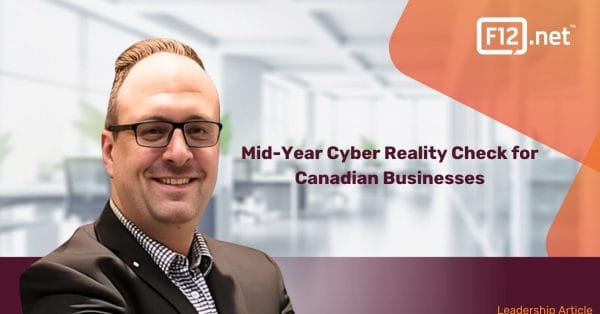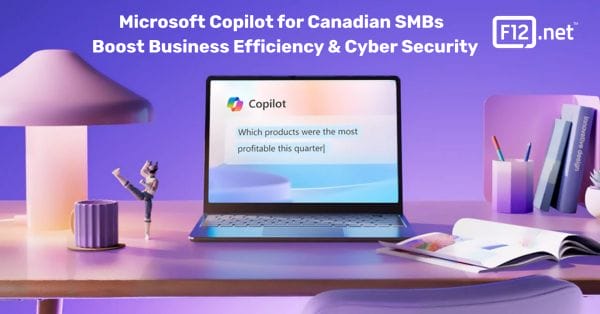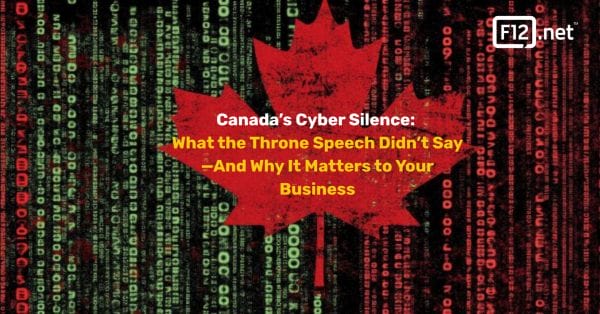F12 client Jessica Denholm, VP at Family Services of Greater Vancouver, also shares what work from home could look like after coronavirus.
If you are feeling the effects from an increase in virtual communication and collaboration, you’re not alone. It is challenging for people to adjust to changes in service delivery, technology, and communication. In this interview, we’re bringing you a long-time Nonprofit and unpacking the indelible impact COVID-19 is likely to have.
Watch the full interview
Or jump to the topic that most interests you
00:44 – The impact of coronavirus
02:16 – Fundraising
04:20 – Migrating to work from home
06:29 – Lasting changes
10:32 – Working with different stakeholders
Interview Questions & Answers
I’m Jessica Denholm and vice president at Family Services of Greater Vancouver and currently my position with the organization is largely administrative so I oversee risk management and privacy and accreditation contract management and also have as part of that portfolio facilities and of course information technology and so that’s where my connection with F12 comes in.
The impact of Coronavirus
Q: How in a very general term how is the pandemic impacted the organization?
A: Well we deliver crucial social services to different populations across Vancouver so we’re talking about things like youth homelessness and people who are experiencing intimate partner violence and and families that are challenged with parenting, addiction and a whole host of social challenges so we’ve got programs that span across the lower mainland are part of part of what our challenges is one and how do continue to deliver those really crucial services to people who probably need them more now than ever and how do = we stay connected and of course the challenge is now how do we continue to deliver those services in the new way of service delivery which is often virtual and remote certainly we have some essential services that are on the ground that are still running and operating we have residential services and drop-in for youth we had to adapt to a new ways or find different or alternative ways to deliver the same services to clients right you’re probably really relying on us now more than ever.
Fundraising
Q; interesting and have you seen any specific impacts to fundraising or a anything amount that some of the business external from kind of the services that you provide?
A: Yah, we have a fantastic director of fund development and of course certainly challenged by what’s going on right? We’re not holding traditional fund developments or fundraising events in the way that you’d typically think of them as so everyone has had to come up with creative and super innovative ways to reach the larger community in terms of its support to Family Services so she’s working super hard and trying to make those connections to the larger donor community and whether is grant writing or whatever but again trying to find different and new and creative ways to access donors and support.
Q: Yeah I imagine creativity is key right now and in that role and and I I’m personally looking forward to seeing kind of what comes out of it because there’s there’s got to be some some things that will stick I imagine.
A: Yeah we were just yeah we were just throwing around some ideas the other day like you know normally if we would have like you know people getting out and doing their own family picnics in the park going out and doing a video or taking pictures and send them in and and finding a way of all of us staying connected but doing in a way in social distancing and trying to stay connected in that way there’s this lots of creative things that are being thrown around right now for sure.
Migrating to work from home
Q: Interesting before the pandemic how did you approach work from home? What is the transformation looked like for you one or two things that you think are pertinent to highlight?
A: Well certainly certainly access to information when we need it and in a consistent way and in a readily available way which entails you know prior to us moving to our remote work environment which was probably the week of March the 16th is when we went full-tilt so prior to that it was fantastic with working with Darin and having him kind of you know having him move everything to Sharepoint for us and enhancing our VPN access so that departments like that finance and HR could access their databases and have everything that they needed to run those departments smoothly they needed everything essentially at their fingertips in their homes so that was done we actually they were Darin was fantastic in terms of getting that figure it out for us in planned and so really by the time that week arrived and we were all really in our homes at that point for the most part things were accessible which was exactly what we needed and then of course there was a the other huge shift for us not from the administrative point of view but to the direct service delivery was so how do we stay connected to the clients and so of course this big undertaking was how do we do telephone counselling with clients how do we do video conferencing that was a huge piece that Darin undertook with us so to find the right platform which was the best one in terms of our requirements in terms of privacy which ones were most user friendly and then being able to provide those to clients and stay connected.
Lasting changes
Q: It will be interesting I think to see if the experience and changes have permanently affect how businesses operate will there be lasting changes. Are there changes in your organization that you foresee maybe being adopted long term?
A: Well I think we are, I think a part o this has been has been an interesting, certainly we wouldn’t wish a pandemic on anyone, but certainly it has been an opportunity for us to have a relook at how we can do our work. Again both administration and front line in new and different ways and what are some things that are more efficient now. Clearly there are some things that are and I wouldn’t be surprised and I just finished telling you that remote work was not really necessarily a part of our regularized work environment but I think what will happen is that we maybe move to that it may be that you are in the office three days a week and working from home for 2 days a week. Because everything that I can do now essentially I could only do from the office I can now do from home. And then the pieces around service delivery, while it is hard to imagine that in person meetings would ever be eclipsed by having virtual environment because there is so much that can happen in an office environment that is very rich, there can be some consideration in how we can deliver services to people who may not want to go into an office or might feel unsafe about leaving their home. So I think there is the niche there for sure.
Q: Interesting let me preface this by asking did you ever provide services to members remotely like through phone or through video that you also provide in person like counseling and things like that?
A: Yah, I mean again not in any sort of intentional service delivery. We have an EAP program that has provided in the past sessional counselling or video counselling but certainly we are doing it all of that that way and lots of e-communications through text, certainly our victim services workers, these are service workers that work largely with women who are experiencing intimate partner violence their main form of communication is texting through their phones, not exclusively, but a lot of it through that medium and so parts o the work have been outside of the in person exchange but I think this has provided an opportunity to tap into a certain client population who may find this way of communication more desirable.
Working with different stakeholders
Q: Fascinating. Have you with dealing with your multiple vendors and even the public, media all the external stakeholders has anything you come across notable in terms of flexibility or resources things like that that have been helpful?
A: There’s been a lot of media coverage for support for non-profits that are still delivering essential services, those front line services that has been there for sure. Our funders have said to us our larger government funders both MCFD and MPSSG have both said to us let us know what enhancements you have had to make in order to provide delivery of services to clients and incurred additional costs as a result whether is getting licenses for video conferencing platforms or peripheral equipment like my headset or a laptop for somebody who might work largely off of their phone. They have said let us know, can’t promise you anything but we’d be interested in tracking those costs, maybe there are grants that we can send your way. So there has been that flexibility for sure and again services providers and partners that work with us in delivering some of our programming have been pretty collaborative in how to get, whether it is video platform choice, whatever it may be everybody has been trying to figure out the best way to do their work and I think there seems to be more of a reason to actually have to work more collaboratively with each other we are forced to be that way.
Yah, I would agree, I’m getting to more of my colleagues across the nation that I ever did before which is very cool.
We were more prone prior to the pandemic to pick up the phone and have telephone conversation as opposed to have a teams meeting so you’re right for the first time you get to see someone’s face that you’ve been talking to for a year so it’s been interesting.
And more than that you get to see what their house looks like.
I know! I don’t know if you’ve seen this but there’s this chart on zoom and it’s the percentage of time you spend focussing on different things and I think it says 15-20% percent is focused on the information that you are gleaning from the room they are sitting in so I totally get that.
Communication through the crisis
Q: That’s hilarious. That’s a good segway into the next topic of communication. Communication is something I think that a lot of organizations are doubling down on with all the different kinds of groups whether it is service end user of your services your clients your members your internal staff management team and then suppliers as well or vendors. How are you communicating or how is the organization communicating through the crisis?
A: You’re absolutely right. Not only is the quality of the communication different you know phone email text and now teams meeting where you actually seeing someone face to face so certainly that has changed. And we have decided within Family Services that we will use Teams as the primary way we communicate so I think people’s calendars are filled with 10 or 15 minute calls and of course the volume. I think because we are feeling we are all working remotely spread out over the lower mainland really more of a motivation to ensure that we are over communicating. We are meeting more often. I think one of the things that I have learned is that how much and this is will speak to the value of being in the office how much is decided in informal conversations as you past people in a hallway at work. There is stuff that goes on everyday when you are working in an office so when you are working remotely you have to be way more intentional about that now. So I don’t have the opportunity to see Joe across the hallway I have to make a deliberate attempt to reach out to him so all of us are experiencing that as part of the busyness the additional busyness we are all feeling is just that. And so that’s been a real learning for me over the last four or five weeks and I would just say again we’re just being more intentional about the amount of communication we are doing through email or picking up the phone or facetiming or through teams. Certainly it has increased or sure.
That’s really fascinating what you shared about the idea of not having those micro moments in passing. That’s the first I’ve heard about that and it makes a lot of sense. I was thinking about it while you were talking there are a lot of things that happen and decisions that get made just in passing, absolutely. In the lunchroom, what have you. And I think for different reasons and one of the challenging things is for people to reach out to management or to people they see as being a level about them because it’s sometimes easier to have those conversations or make a decision when you’re just passing in the hallway. Rather than saying I’m going to interrupt that person and call them.
Jessica, thanks so much for your time.
You’re very welcome.


